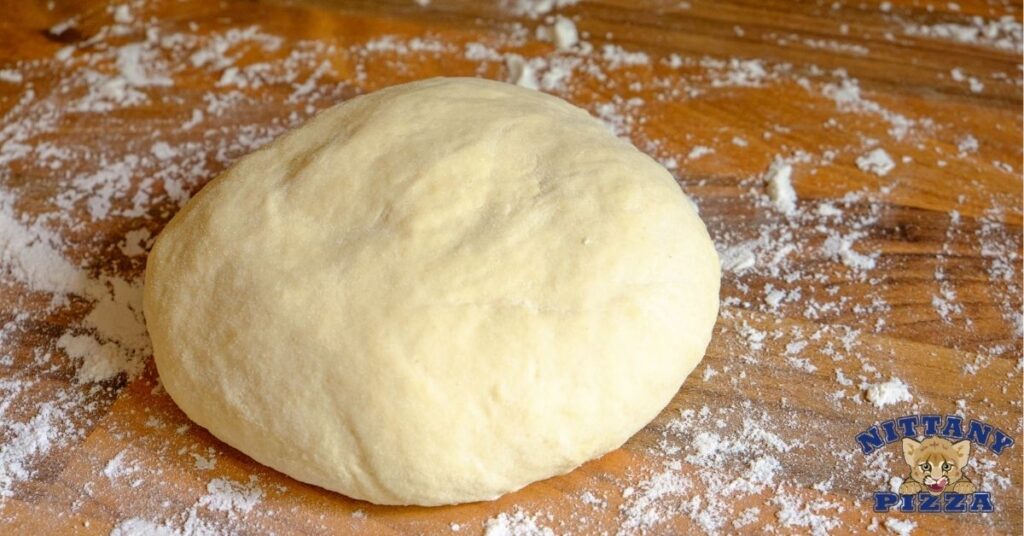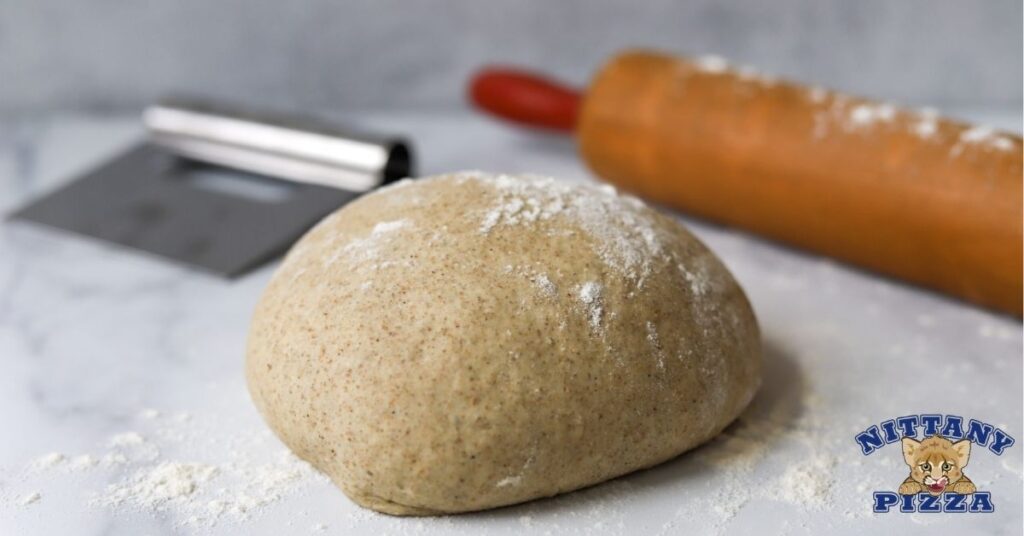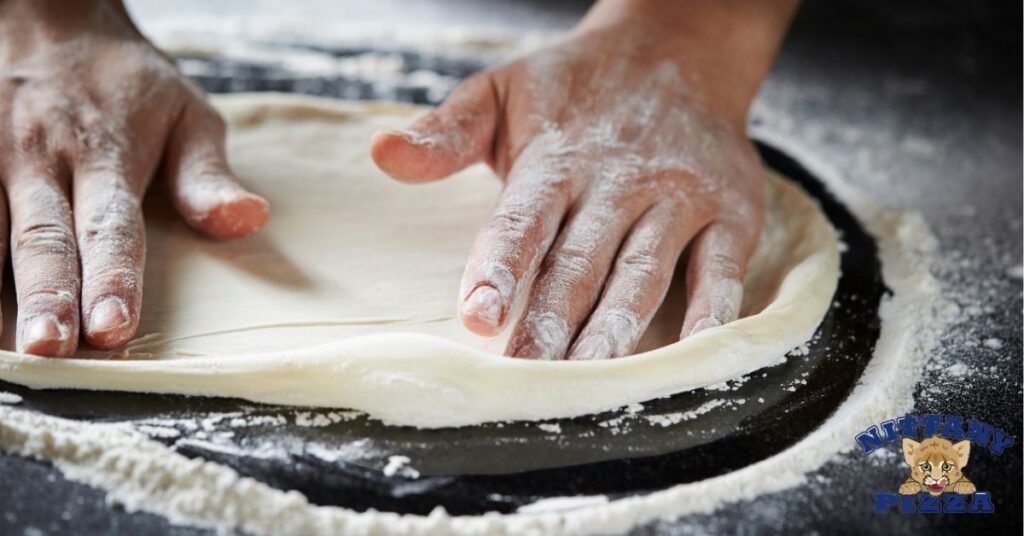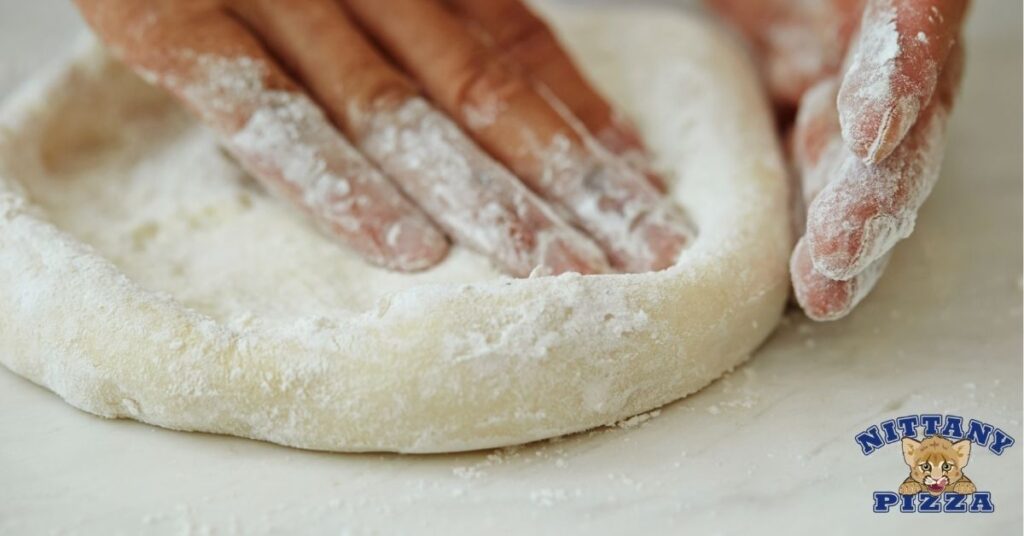If you’ve never tried making pizza with rye dough, you’re in for a treat. This unique twist on traditional pizza dough brings a nutty, earthy flavor that elevates every topping you pair it with. Whether you’re a fan of classic margherita or bold, creative combinations, rye pizza dough adds a depth of taste you didn’t know you were missing.
What Is Rye Pizza Dough?

Rye pizza dough is a variation of traditional pizza dough that incorporates rye flour as a key ingredient. It offers a distinctive nutty and slightly earthy flavor that pairs beautifully with a wide variety of toppings. Unlike all-purpose flour dough, this version brings a wholesome taste and chewy texture, making it an exciting choice for pizza enthusiasts.
You will notice a difference in texture almost immediately. Rye flour has less gluten than wheat, resulting in a dough that feels softer and easier to handle. This characteristic also means it creates a more tender crust rather than the stretchier base of typical pizza dough. Adding it to your repertoire allows you to explore new culinary combinations, elevating both savory and unconventional pizza ideas.
Balanced moisture in the dough is essential to maximize its earthy flavor and ensure a satisfying bite. When combined with the right fermentation process, rye flour develops deeper, more complex flavors. You’ll appreciate its versatility, as it complements both rustic and gourmet toppings—from fresh vegetables to creative sauces and cheeses.
Ingredients
- 1 ¾ cups rye flour (light or medium for a milder flavor)
- 1 ¼ cups all-purpose flour (for structure and elasticity)
- 1 ¼ teaspoons fine sea salt
- ¾ teaspoon instant yeast
- 1 tablespoon olive oil (plus more for greasing)
- 1 cup warm water (around 100°F for proper yeast activation)
Make sure to measure each ingredient accurately to achieve the perfect balance in texture and flavor for your rye pizza dough. Use light or medium rye flour for a subtler taste, or choose darker rye for an earthier complexity.
Tools And Equipment

To make rye pizza dough effortlessly, gather a set of practical tools and equipment. Each item plays a critical role in achieving a well-kneaded, flavorful dough.
Start with a mixing bowl that is large enough to combine and knead your ingredients without spillage. An airtight container or plastic wrap will be essential for covering the dough during its fermentation period. A digital kitchen scale will help you measure ingredients like flours and salt with precision, ensuring the correct texture and flavor.
A wooden or silicone spatula can make mixing your dough smoother and more efficient. You’ll also want a sturdy surface or pastry mat for kneading the dough. If needed, a bench scraper is excellent for handling sticky rye dough and portioning it evenly.
For proofing, include a clean kitchen towel or proofing cloth to cover your dough, allowing it to rise without losing moisture. A rolling pin becomes essential for shaping the dough evenly before adding toppings.
Finally, have a baking stone or steel for a crisp, even crust. If unavailable, you can use a heavy-duty baking sheet. Pair this with parchment paper for a non-stick base. A sharp pizza cutter or chef’s knife will be necessary at the end for slicing your baked pizza.
Directions
Follow these simple steps to create your flavorful rye pizza dough. Ensure you have all ingredients and tools ready before starting.
Prep
Start by gathering all your ingredients: rye flour, all-purpose flour, fine sea salt, instant yeast, olive oil, and warm water. Measure each ingredient precisely using a digital kitchen scale for best results. Lightly oil your large mixing bowl to prevent the dough from sticking later. Prepare your clean work surface or pastry mat for kneading, and set out a clean kitchen towel or proofing cloth for covering the dough.
Mixing The Dough
Combine the rye flour and all-purpose flour in your large mixing bowl. Add the fine sea salt and instant yeast to opposite sides of the bowl to avoid direct contact between the salt and yeast. Use a wooden or silicone spatula to mix them slightly. Gradually pour in the warm water while mixing until the dough begins to come together. Drizzle the olive oil into the mixture and stir until a shaggy dough forms.
Kneading The Dough
Transfer the shaggy dough onto your prepared work surface. Begin kneading by pressing the dough with the heel of your hand and folding it over itself. Turn the dough 90 degrees and repeat. Continue this process for 8 to 10 minutes until the dough feels smooth, elastic, and slightly tacky. Use a bench scraper to handle any sticky bits as needed.
Allowing The Dough To Rise
Place the kneaded dough into your oiled mixing bowl. Cover it tightly with plastic wrap or an airtight lid to trap moisture. Let the dough rise in a warm, draft-free area for 1 to 2 hours, or until it doubles in size. You can lightly press the surface of the dough with your finger to check—it should spring back gently, showing it’s ready.
How To Shape The Dough

Begin by lightly flouring your work surface to prevent sticking. Use a gentle touch to remove the risen dough from the bowl, being careful not to deflate it completely. Divide the dough into equal-sized portions if you plan to make multiple pizzas. Aim for roughly 8–10 ounces per portion for a standard pizza size.
Take one portion of dough and shape it into a smooth ball by folding the edges underneath. Rotate the dough as you fold to create surface tension on top. Once rounded, let the dough rest on the floured surface for 5–10 minutes. This resting period allows the gluten to relax, making the dough easier to stretch.
Flatten the rested dough gently with your fingers, pressing it into a small circular disk. Work from the center outward, using your fingers to push the dough while leaving a slightly thicker edge for the crust. Avoid using excessive force to maintain the tender texture of the rye-based dough.
Carefully lift the dough with both hands and drape it over the back of your knuckles. Rotate and stretch it as you use your knuckles to expand the circle evenly. If the dough resists or shrinks, place it back on the surface and allow it to rest for a few minutes before stretching again.
Check the thickness as you go to ensure an even layer, with the center slightly thinner than the edges. If you prefer a thinner crust, stretch the dough further while maintaining its integrity. Once shaped, transfer it to a lightly floured pizza peel or parchment paper in preparation for topping and baking.
How To Store Rye Pizza Dough
Proper storage of rye pizza dough ensures its fresh, nutty flavor and soft, chewy texture is preserved for later use. Whether you’re planning ahead or freezing for a rainy day, keeping the dough in ideal conditions is key.
Make Ahead Instructions
If you’re prepping your rye pizza dough in advance, storing it correctly will retain its quality. Once the dough has completed its first rise, punch it down gently to release any air bubbles. Divide the dough into portions, depending on how many pizzas you plan to make. Lightly coat each portion with olive oil to prevent sticking and drying out. Place each piece in an airtight container or resealable plastic bag, leaving a bit of room for expansion.
Refrigerate the dough for up to 3 days if you want it to develop deeper, tangy flavors. Before using, remove it from the refrigerator 30 minutes before allow it to come to room temperature. This helps the gluten relax and makes it easier to shape.
Freezing Tips
For longer storage, freezing rye pizza dough is an excellent option. After dividing the dough into portions post-first-rise, wrap each ball tightly in plastic wrap. To avoid freezer burn, place the wrapped dough portions in a heavy-duty freezer bag. Label the bag with the date for easy tracking.
Frozen rye pizza dough can be stored for up to 3 months. When ready to use, thaw the dough overnight in the refrigerator. Once thawed, let it sit at room temperature for 30 to 60 minutes before shaping to achieve the best texture and elasticity.
Tips For Perfect Rye Pizza Dough

Achieving the perfect rye pizza dough requires attention to detail and a few essential tricks. Begin by choosing high-quality rye flour that suits your desired flavor profile, whether light for a milder taste or dark for a bolder, earthier note. Mixing it with all-purpose flour ensures the right balance of elasticity and structure.
Control the hydration of your dough by measuring your water and flour accurately. Rye flour absorbs moisture differently than other flours, so the dough may feel slightly tackier; resist the urge to over-flour. Use a digital kitchen scale for precise measurements to maintain consistency.
Allow sufficient fermentation time. A longer rise, often two to three hours, enhances the dough’s flavor by developing its natural complexities. Keep the dough covered with plastic wrap or a damp cloth to prevent drying out during fermentation.
When kneading, handle the dough gently. Rye flour has lower gluten content, so overworking the dough can result in a denser texture. Aim for a smooth and supple consistency without exerting too much pressure.
Prepare your workspace before shaping the dough. Lightly flour your surface to minimize sticking, but avoid over-flouring, as this can toughen the crust. Room temperature dough is easier to work with and ensures an even stretch.
Prioritize a crisp crust by using a preheated baking stone or steel in your oven. These tools help mimic the intense heat of professional pizza ovens, creating an ideal base for your pizza. Bake the dough at high heat, typically 475°F to 500°F, for a golden, chewy crust.
Experiment with toppings that complement rye’s unique flavor. Rustic combinations like smoked meats and caramelized onions or fresh, robust options like arugula and goat cheese are excellent choices. Let your creativity shine while keeping the topping layers balanced to avoid a soggy crust.
Conclusion
Rye pizza dough offers a flavorful twist that transforms your homemade pizzas into something truly special. Its nutty, earthy taste and tender texture pair beautifully with a variety of toppings, inviting you to get creative in the kitchen.
Whether you’re crafting a rustic pie or experimenting with gourmet ingredients, rye dough provides a versatile base that enhances every bite. With proper preparation, storage, and baking techniques, you can master this unique dough and elevate your pizza game effortlessly.
Give rye pizza dough a try and discover how its distinctive flavor can inspire your next pizza night.
Related Posts:
- Can Pizza Cause Gas? Here’s Why It Happens and How to Prevent It
- Best Containers for Pizza Dough: Keep It Fresh, Flavorful, and Perfectly Risenn“
- How Many Pizza Places Are in NYC? Explore the 1,600+ Pizzerias Across the Five Boroughs
- How to Clean Pizza Steel: Easy Tips to Keep It Rust-Free and Cooking Perfect Pizzas
- How to Use Pizza Steel Like a Pro: Get Crispy Crusts Every Time at Home
- How to Make Authentic Neapolitan Margherita Pizza at Home: Tips, Tools, and Recipe You Need
- Authentic New Haven Apizza Recipe: Make Connecticut’s Iconic Pizza at Home
- Ultimate Pastrami Pizza Recipe: A Bold Twist on Your Favorite Comfort Food
- Pizza Alla Diavola: Spice Up Your Dinner with This Fiery Italian Classic
- Pizza with Turkey Pepperoni: A Healthier, Delicious Twist for Your Next Dinner Night
- How to Make Perfect Rye Pizza Dough for a Nutty, Flavorful Crust
- Why Does Pizza Make Me Thirsty? The Surprising Truth Behind Your Post-Pizza Cravings
- Why Is Pizza So Expensive? Here’s the Truth Behind Rising Pizza Prices in the US
- Step-by-Step Guide to Building a Wood-Fired Micro Oven for Perfect Outdoor Cooking
